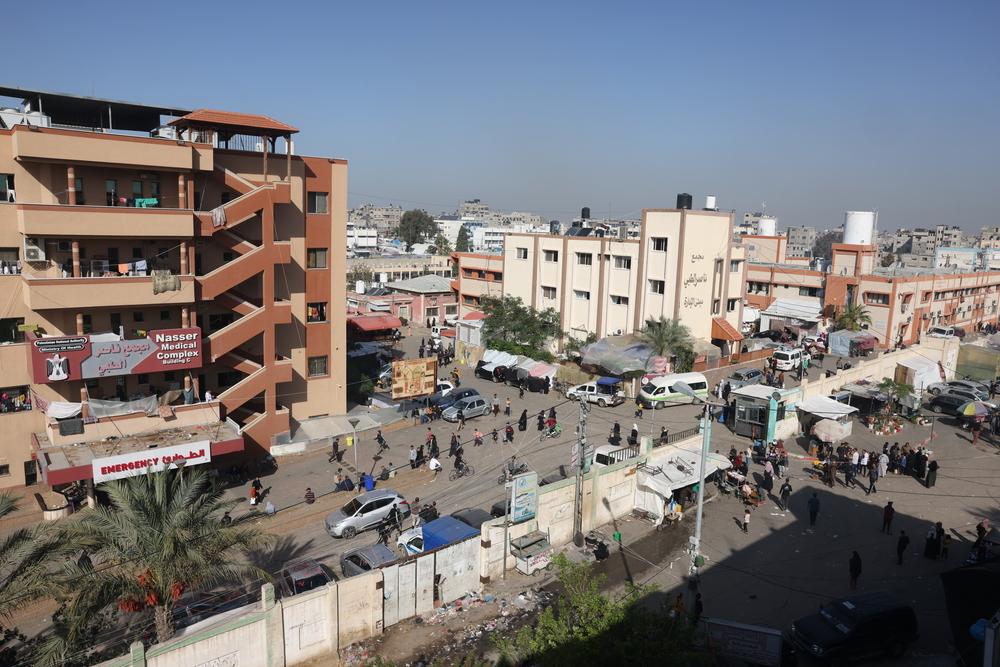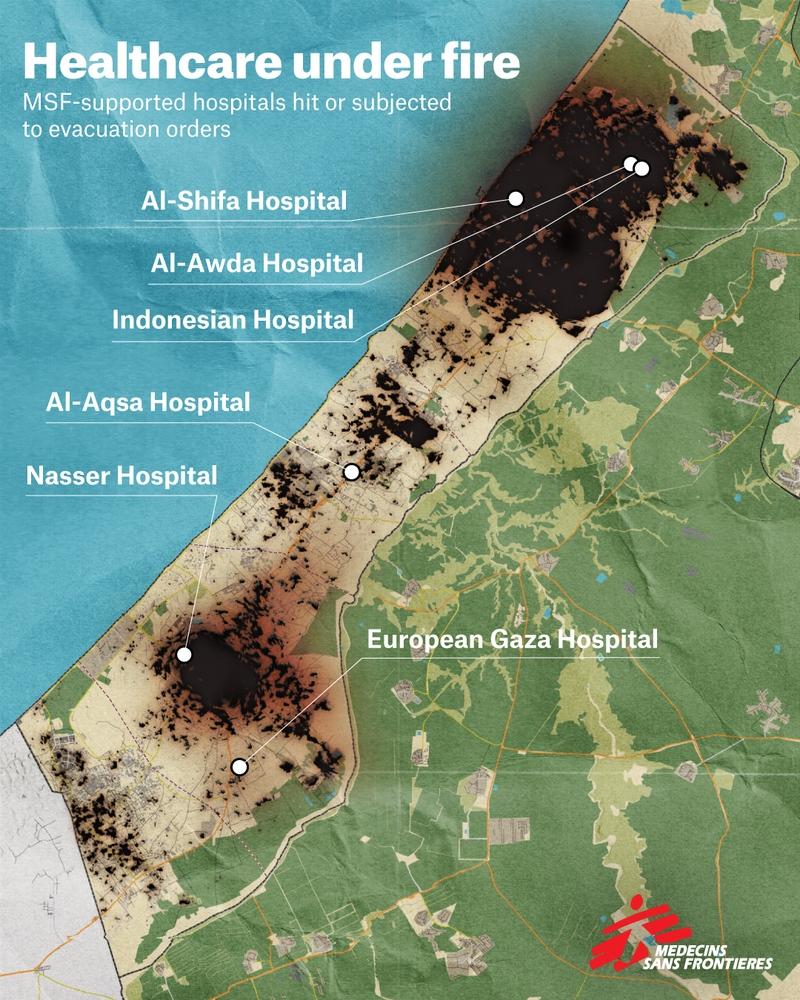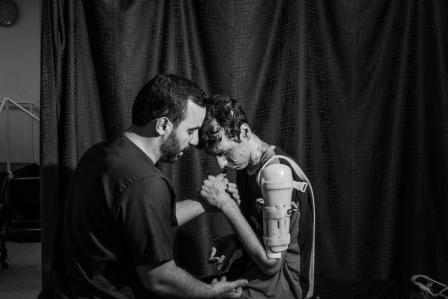Gaza: With Nasser hospital out of commission, people in the south run out of healthcare options

General view for Nasser hospital. Palestinian Territories, November 2023. © MSF
Jerusalem, 26 January 2024 – Amid ongoing heavy fighting and bombing in Khan Younis, south Gaza, Palestine/OPT, vital medical services have collapsed at Nasser hospital, currently the largest functioning health facility in the enclave. Doctors Without Borders / Médecins Sans Frontières (MSF) deplores a situation in which people have been left with no options to go for treatment in case of a large influx of war wounded.
Most of the hospital’s staff, along with thousands of displaced people who had sought shelter in the hospital, fled in the days leading up to the evacuation order of the surrounding areas by Israeli forces. The hospital’s surgical capacity is now almost non-existent, and the handful of medical staff remaining in the hospital must contend with very low supplies that are insufficient to handle mass casualty events – large influxes of wounded people.
Between 300 and 350 patients remain at Nasser hospital, unable to evacuate because it is too dangerous and there are no ambulances. These patients have war-related injuries such as open wounds, lacerations from explosions, fractures, and burns. On 24 January, at least one patient at the hospital died because there was no orthopaedic surgeon available.
“People’s lives are at risk because of the lack of medical care. With Nasser and European Gaza Hospital almost inaccessible, there is no longer a healthcare system in Gaza,” said Guillemette Thomas, Doctors Without Borders medical coordinator in Palestine.
These systematic attacks against health care are unacceptable and must end now so that the wounded can get the care they need. The entire health system has been rendered inoperative.Guillemette Thomas, Medical Coordinator
Rami*, an Doctors Without Borders nurse trapped inside Nasser hospital, described feeling helpless during a mass casualty event that brought 50 wounded and five dead people to the emergency room at once on 25 January.
“There was no staff left at the emergency room [ER] of Nasser hospital. There were no beds, just a few chairs and no staff, just a few nurses,” says Rami. “We took the patients to the ER to provide first aid; we managed with what we had, tried to stop the bleeding and sort the patients there. It was a horrible event and really affected me psychologically.”
Basic supplies, such as gauze pads, are running out.
I went to the surgical room today to receive a patient in our department and asked the few remaining staff if they could supply abdominal gauze. They said that they didn’t have any to spare, and that the ones they had were already being used on several patients. They use it once, then squeeze out the blood, wash it, sterilize it and reuse it with another patient. This is the situation in Nasser’s operating theatre, can you imagine?Rami*, Nurse

Map showing the hospitals where Doctors Without Borders have been working or given support after 100 days of the siege over Gaza. © MSF/Jorge Montoya
European Gaza hospital is the second biggest facility in the south of Gaza, after Nasser hospital, with a large surgical capacity. Today, it is also unreachable for medical staff and people, as its neighbouring areas are under evacuation order.
Hospitals need to remain protected spaces and people and medical workers must be allowed to access, and provide, medical care. Today, the International Court of Justice (ICJ) issued provisional measures ordering Israel to prevent acts of genocide against Palestinians and take immediate measures to improve the humanitarian situation in Gaza. While this is a significant step, only a sustained ceasefire can stop the loss of more civilian lives, enable the flow of humanitarian assistance and vital supplies for the 2.2 million people living in the enclave.
*For security reasons, Rami asked for his last name not to be used.
Will you support our emergency response work?
Help us provide lifesaving medical care during emergencies by making a donation today.







